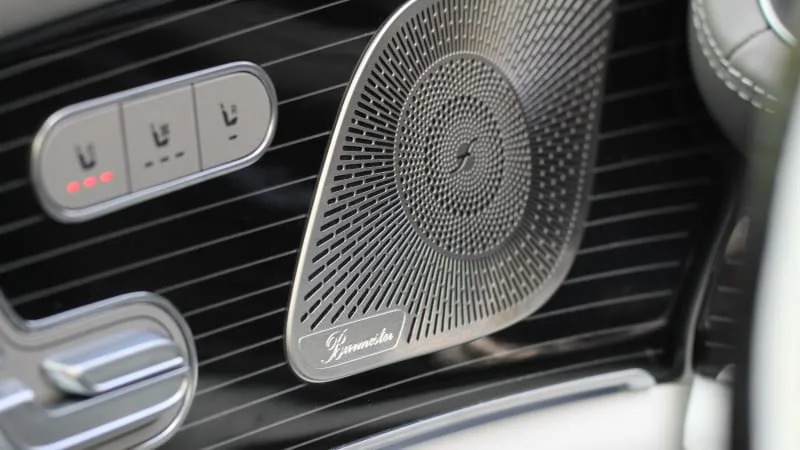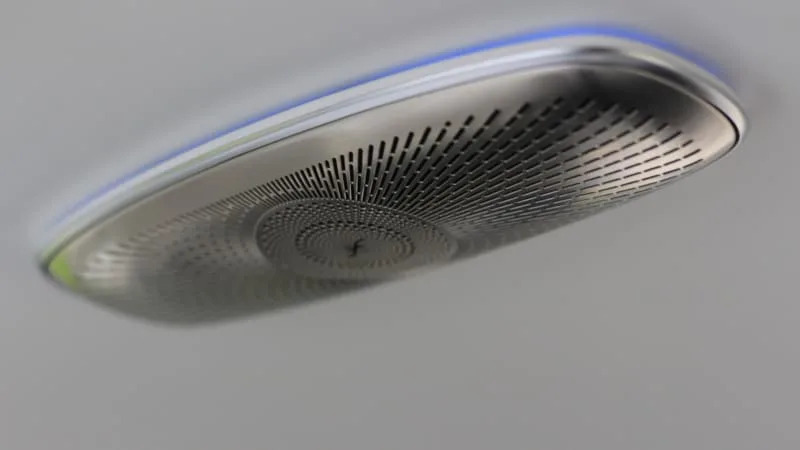Mercedes-Benz’s Dolby Atmos audio wins the 2023 Autoblog Technology of the Year award

The same thought kept cropping up throughout the day of testing for the 2023 Autoblog Technology of the Year award: Mercedes’ audio system is something else. Mind you, it takes a lot to impress a room full of folks who are constantly testing the latest and greatest in automotive audio. From McIntosh to Panasonic and the countless Harman-owned brands in between, we’ve heard them all. But when we finally set to testing the Dolby Atmos-powered audio system now featured in several new Mercedes-Benz products, we knew there was something special on our hands.
Yes, a new-to-cars (but hardly new to home theater) audio software system integrated into a Mercedes-Benz wins the 2023 edition of Autoblog’s Technology of the Year award, and it did so against stiff competition. If you follow the latest happenings of in-home or theater audio, you’ve likely heard of Dolby Atmos before and maybe even seen the logo pop up on your TV screen as you’re firing up your most recent Netflix binge. The sound bar or speakers you use as a home theater setup might be Dolby Atmos-capable units, but up until recently, Atmos hasn’t been available in vehicles.
“The silky sound of the Mercedes-Benz Dolby Atmos system enhances the in-car experience and is a signpost for the future of in-car audio,” Autoblog Editor-in-Chief Greg Migliore said. “Mercedes and Dolby have created a system that makes listening to music deeply satisfying. More than just a flashy sound system in an expensive car, Mercedes Dolby Atmos is what music should sound like in cars of the future.”
To determine Technology of the Year, three main questions are asked and editors assign point values based on how well the technologies answer those questions. How significant is this tech? How well does it work? And lastly, what’s its “Wow Factor?” Needless to say, the Dolby Atmos-powered Burmester audio system in the 2024 Mercedes-Maybach GLS 600 was eliciting “wows” at a high rate.
The Winner: Mercedes-Maybach GLS 600’s Dolby Atmos audio system
So, why should you care about a special audio software program tested on a vehicle that costs a lot more than many homes throughout the country? Per usual with Tech of the Year, one of the big factors for being declared a winner is how applicable the tech is to other vehicles within or outside of the carmaker bringing the tech to market. Vehicle-to-load (V2L) systems similar to Ford’s Pro Power Onboard, the winner from 2021, are available or will be available in a number of other new vehicles, and we’re exceedingly glad to see that. Dolby Atmos Spatial Audio has a similar potential to proliferate, as the same software is already being offered on many Mercedes models, and Lucid is similarly partnered with Dolby to offer the experience in its vehicles. Volvo and Lotus have partnerships to bring it to future vehicles, and we fully expect others to jump onboard the Atmos train. We’re not saying it’s going to be offered on the next Toyota Corolla, but there’s every opportunity to start upping the audio quality of cars everywhere with Dolby Atmos.
Describing how Dolby Atmos audio works is a rather long-winded exercise and may actually put you to sleep, but the quick and dirty is that it’s a shockingly better way to do surround sound. Your car may have a “surround sound” toggle, but it has nothing on a true Dolby Atmos setup. The key addition with Atmos is that it adds a height channel – home theater setups typically use up-firing speakers in soundbars to facilitate the audio experience – which allows artists to let you listen to their music in what Dolby calls a “three-dimensional sound field.” Tracks mixed for Dolby Atmos place sound elements within that field. Ultimately, that allows artists greater customization in how they mix their tracks and wish to present it to listeners. Universal Music Group is actively promoting Spatial Audio and partnering with Mercedes-Benz to bring tracks that carry the “Approved in a Mercedes-Benz” tagline. It’s no marketing joke or gimmick – the music is stupid-good.
The listening experience of all the meddling and customization work from artists and their recording studios will have you losing your mind at instrumentals or sounds that you didn’t even know existed or blended into the background in songs before. Not to sound too corny, but it feels like you’re sitting in the middle of a circle with the singer, their backup singers and an entire band around you. And on top of that, all those musicians are seemingly moving around the circle, bringing you new sounds from various corners throughout a song, always keeping you on your listening toes.
The 360-degree nature of what Dolby Atmos software is able to provide can’t be understated. You’ll hear the lyrics move from one corner to another and various instruments wash forward and overhead with such precision and clarity that it almost doesn’t feel real. Switch between a Spatial Audio track and the same version of that song without Dolby Atmos software applied, and you’ll hear the difference in depth instantly. Sure, maybe the music is still in a surround format, but that sense of being in the middle of a stage dissipates. Those instruments that were so easy to pick out before start to clash; the sheer amount of detail and clarity takes a step back, too. The difference is stark enough to have us skipping songs that don’t feature Spatial Audio programming for those that do, and we have a feeling you’ll be doing the same.
Queen’s “Bohemian Rhapsody” left our mouths agape at the absolute landscape of a sound production it is. For the Swifties out there, Taylor Swift’s massive catalog of albums are nearly all available in Atmos’ Spatial Audio, and it’s almost guaranteed that you’re going to gain an even greater appreciation for her music once you listen to it like this. Pink Floyd’s “The Dark Side of the Moon” is hard to touch for Dolby Atmos enjoyment, and the list goes on. You could spend hours – and we did – just idling and listening to the wide range of Spatial Audio tracks available out there.
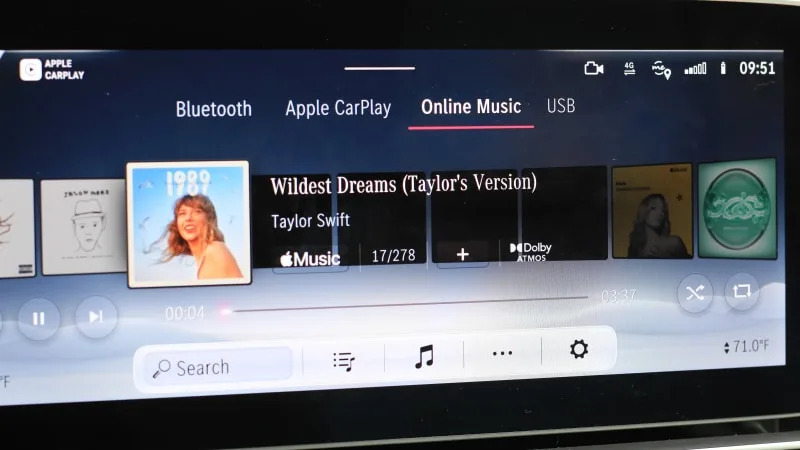
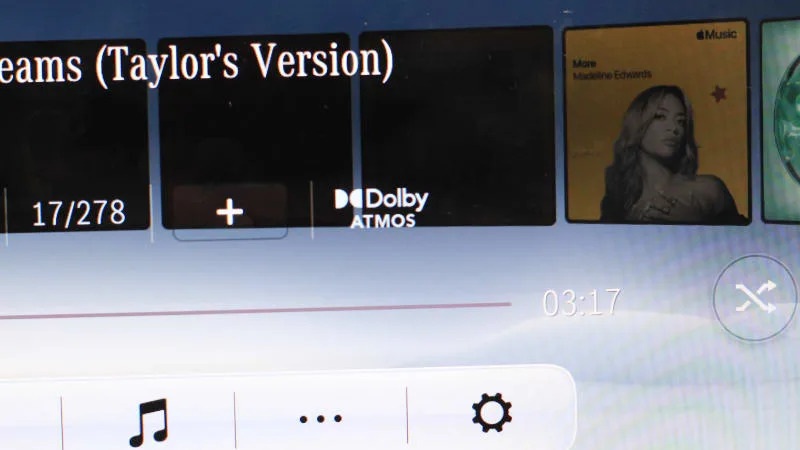
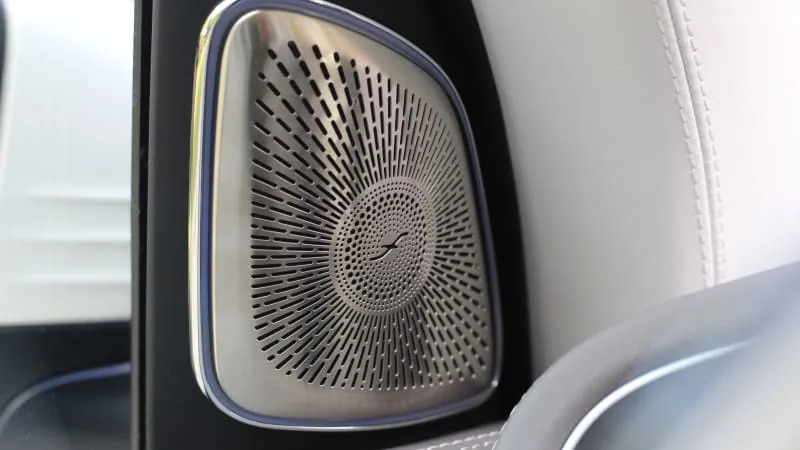
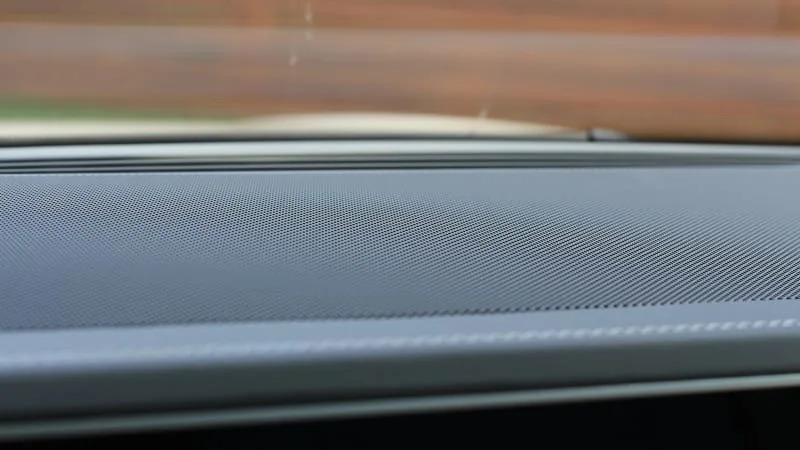
The actual availability of songs in Dolby Atmos Spatial Audio is one of the only “buts” to this whole operation, though at least it’s a small one. If you want to take advantage of this tech, you need to be listening via Apple Music with Dolby Atmos activated in the car, so you can’t just fire up a song on Spotify via Bluetooth and think that it’ll work. Only so many tracks have been engineered for it and are available in Dolby Atmos for the time being, but those figures are constantly increasing, and you can ensure that you get the right songs by just searching for “Spatial Audio” in the app. The interface is a touch clunky within the MBUX infotainment system, but it’s still functional and not a serious hindrance to listening.
And while it may not be the star of this software-driven show, the 27-speaker Burmester hardware in the Maybach GLS 600 is the perfect soundstage for Atmos-powered audio to show its full potential. Most home audio setups don’t have anywhere near as many speakers, but with this number of audio sources (and various placement locations for speakers), Dolby Atmos can come alive in a way that we’ve never heard in car audio before. We can only hope that more automakers make this a trend by integrating this special software into their vehicles.
The competition
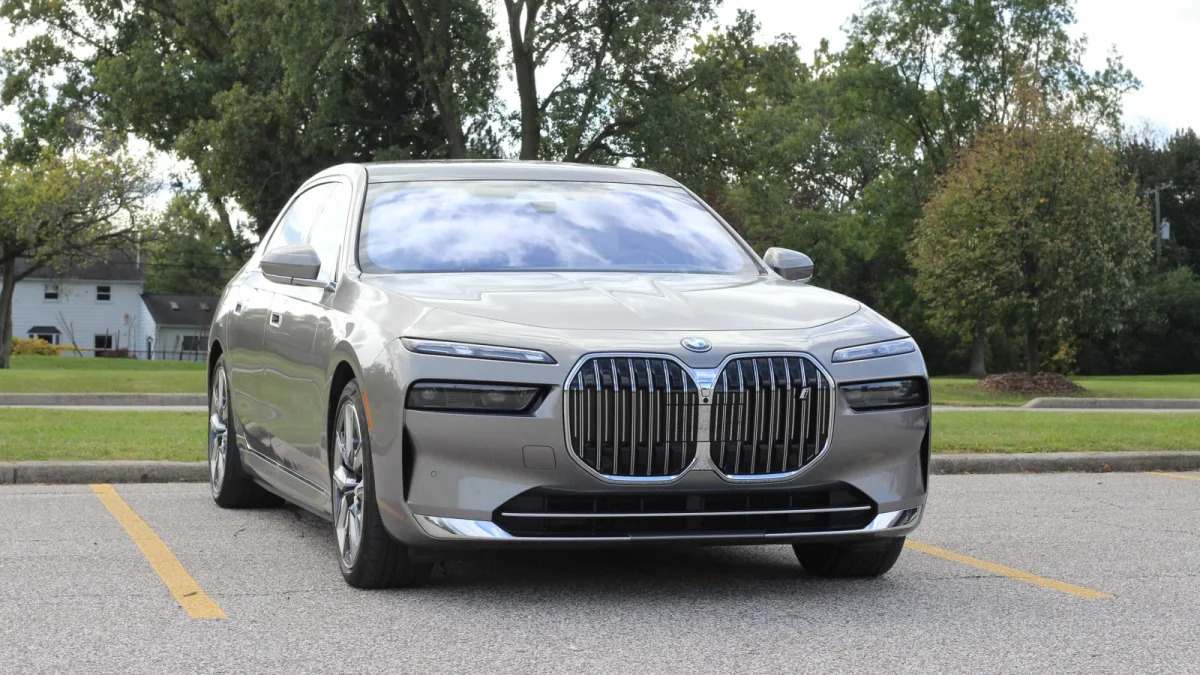
Second Place: BMW 7 Series’ Theater Screen
This was an early favorite to win, and it’s easy to see why. A 31.3-inch 8K screen that swivels down from the ceiling in a dramatic show of opulence is about as fancy as it gets for new car tech in 2023. That it’s powered by Amazon Fire TV and a 5G data connection is just icing on the cake, and boy is it an enticing cake.
We liked how easy it was to operate the screen and its various apps, and the overly showy presentation is so good that we wouldn’t have it any other way, but the Theater Screen had its drawbacks that kept it from being a winner. For one, while the screen is utterly massive, its size and placement within the car make it a compromised experience. Video content is simply not sized to fill a screen with a 32:9 aspect ratio. You can choose to put the video playback in the center or canted to either side of the screen, but it’s still a bit odd to have such a vast area of emptiness while watching a show. It’s tough to love ergonomically, too. Instead of traditional headrest-mounted entertainment screens, the Theater Screen will force you to turn your head or body slightly toward the center of the vehicle to interact with it. Plus, when it’s being used, the driver cannot see out of the rear window, because the screen takes up the entire area and BMW doesn’t offer a digital rearview camera mirror as a backup.
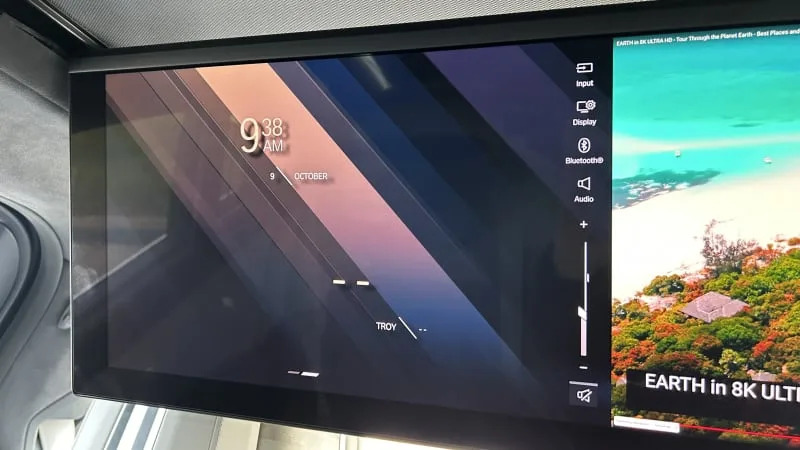
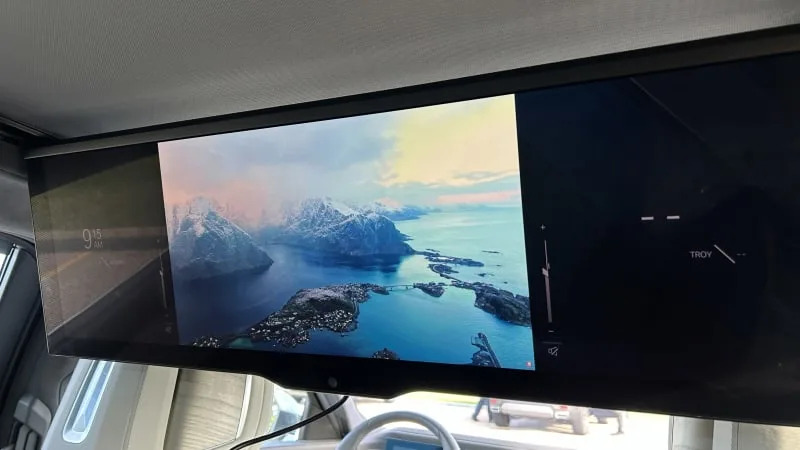
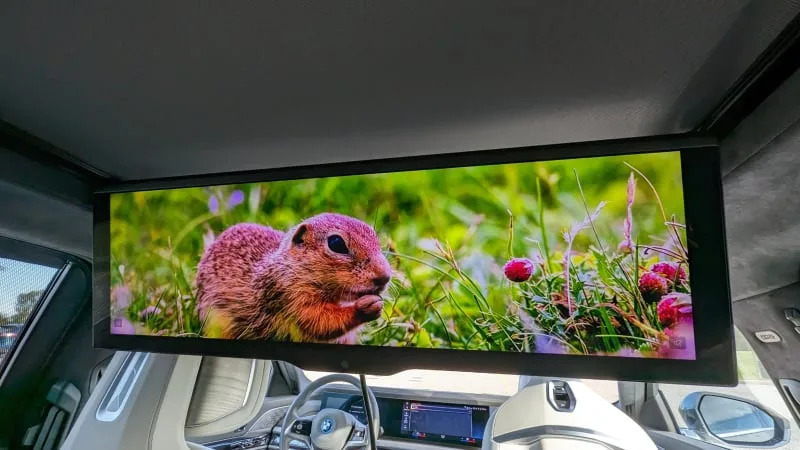
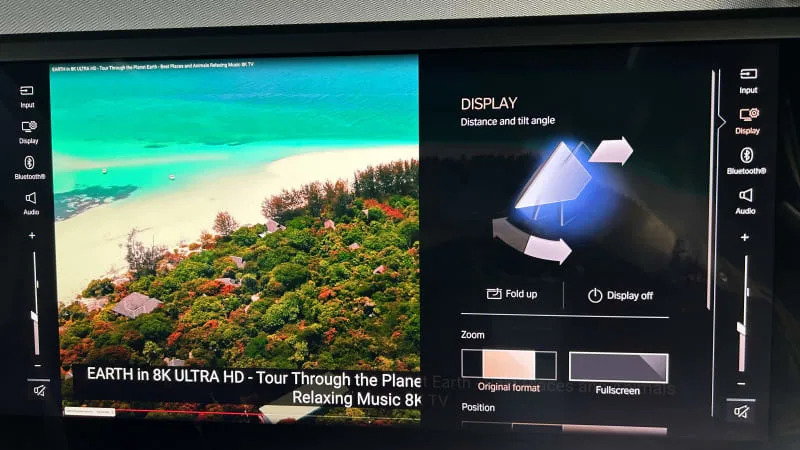
Associate Editor Byron Hurd’s experience with the Theater Screen is a perfect example of how much of a mixed bag it ended up being.
“My experience with BMW’s Theater Screen wasn’t exactly flawless, but it’s clear that BMW put some thought into this setup,” Hurd writes. “The ability to tilt and slide the screen back and forth is welcome, especially if you can’t quite eliminate incoming glare with the rear seat privacy shades alone. The controls are also simple to use, and the integration with the car’s audio system is fantastic (make sure you fiddle with that bass setting!). Using external devices is a bit of a mixed bag; it took me some trial-and-error to get my MacBook synced up, and my personal Windows PC never played nice with the audio despite recognizing the display on the first try. That said, the input lag will make anything more than clicking through a PowerPoint presentation rough to do in real-time (forget about using it for gaming; the delay will kill you), but for kicking back to watch a stream, it’s spectacular.”
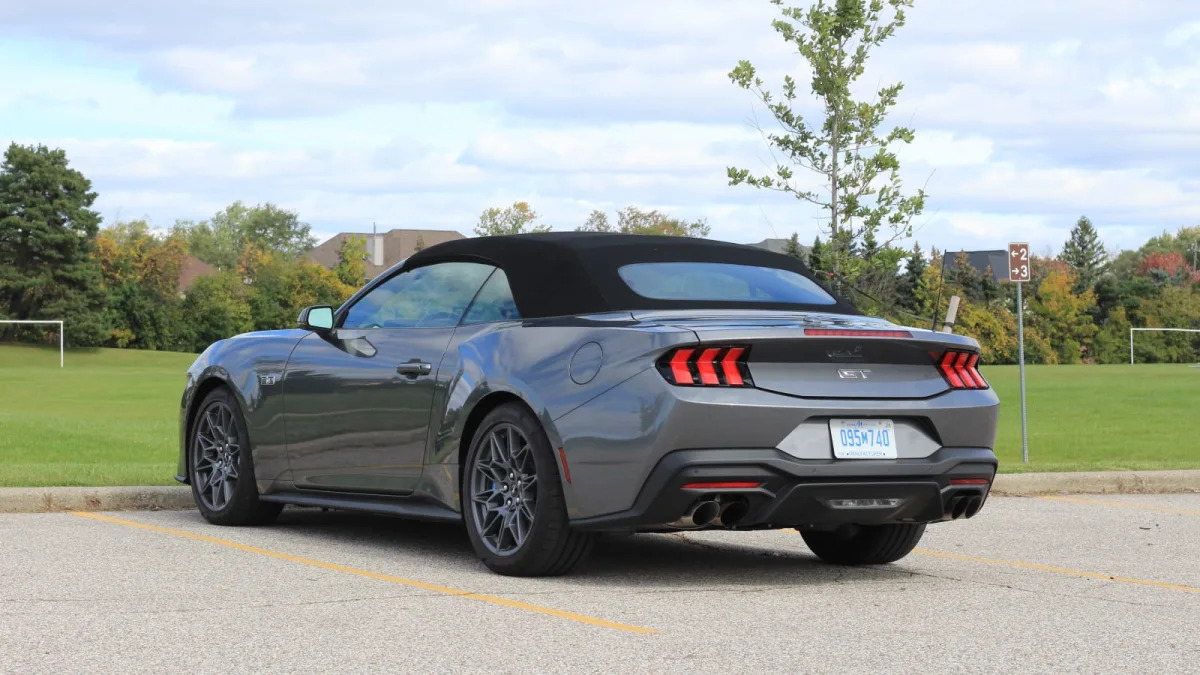
Third Place: Ford Mustang’s Remote Rev
Before you admonish us for being childish and including Remote Rev in this year’s competition, go try it out yourself and try not to giggle a little bit. Cars are supposed to be fun, after all, and the 2024 Ford Mustang’s Remote Rev feature is a perfect example of what that looks like. Truthfully, its only real downside is in the tech’s significance. Being able to rev your Mustang without even being in the driver’s seat is hilarious, but the usefulness versus others in this test is dubious at best, and the scores reflected as much.
Senior Editor for Autoblog Electric John Beltz Snyder may have used a half tank of fuel in just one day of Remote Rev testing. But again, before you call it useless or silly, go try it out and tell us you don’t want to hit the button again.
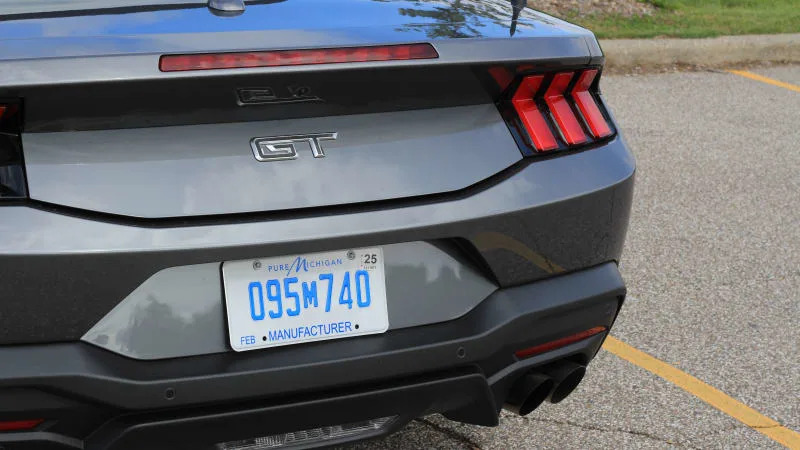

“Remote Rev solves one particularly small and specific problem,” Snyder writes. “How do I listen to the exhaust note from outside my car? With this tech, you press a sequence on the key fob, and the Mustang gives you a pre-programmed little exhaust performance. It’s cool once or twice. It’s cool for a few more times if you’re the type of person who speaks the love language of unnecessary repetition (guilty). But it doesn’t serve a purpose beyond a few seconds of audio entertainment.
“But, like I said, it’s a pre-programmed rev sequence. You can’t rev it live, as though you had a little accelerator pedal on the fob. That’s what I was really hoping this tech would let me do. Still, I could see myself hiding behind a bush and remote-revving when someone walks past my car. It is loud, after all, and the scares would be funny.
“Is it world-changing? No. But this product arrives at a time in automotive history where it seems like the tide of internal combustion is receding. When most of the cars are electric, and you’ve got a Mustang with Remote Rev in your stable, it’ll be pretty fun at barbecues to open the garage door and say, ‘Hey, check this out.’ It’ll at least bring back some memories.”
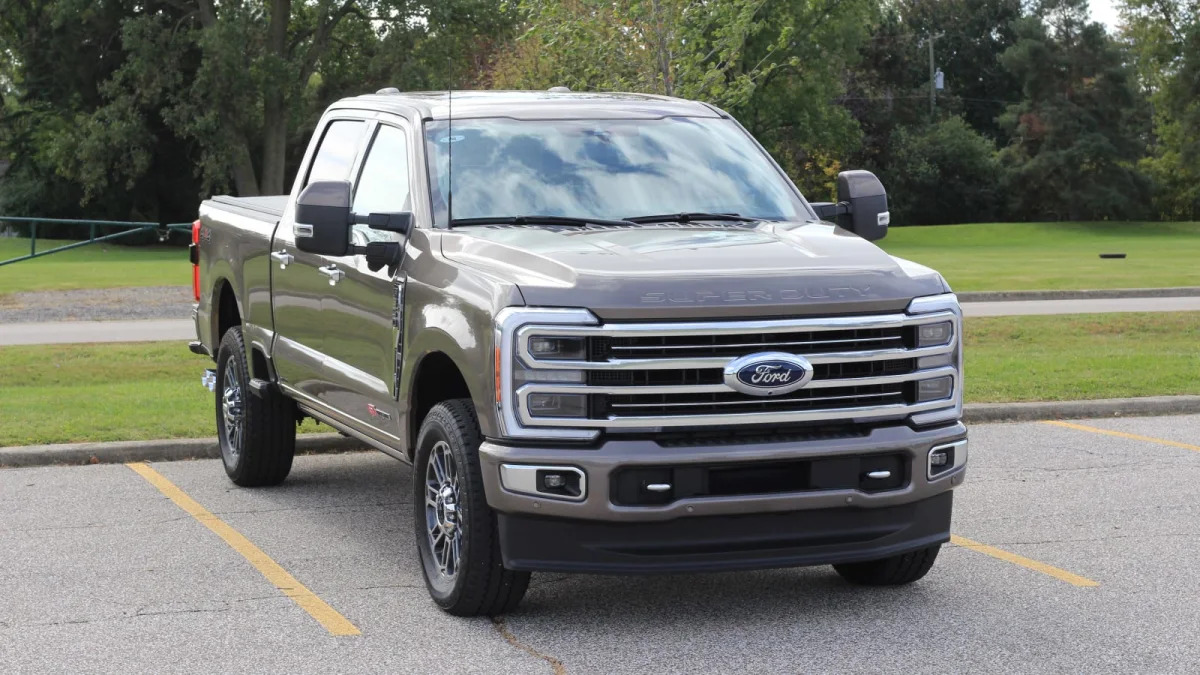
Fourth Place: Ford Super Duty in-tailgate camera and parking sensors
The 2023 Ford Super Duty is full of the usual Ford smattering of innovations, but none caught our attention more than the second set of sensors and backup camera sitting on the top of the tailgate. Why would Ford point a camera and sensors up at the sky, you ask? Well, in case you need to do some driving or reversing with the tailgate down, that is. Pickups until now have only ever had a single backup camera and rear sensors that functioned with the tailgate in the normal upright and locked position. When you go to get hitched up to a trailer that requires the tailgate to be down, though, those niceties disappear as your camera and sensors point directly at the ground. No more!
It might sound simple, but the second set of sensors and camera on the top of the tailgate allow you a lot more flexibility. And they’re especially helpful because when you’re carrying a load that may require the tailgate to be down, it might be when you need that camera or backup sensors the most.
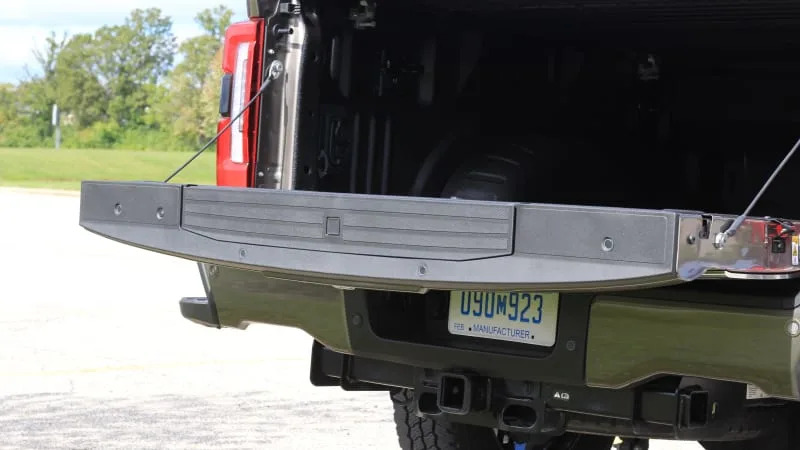
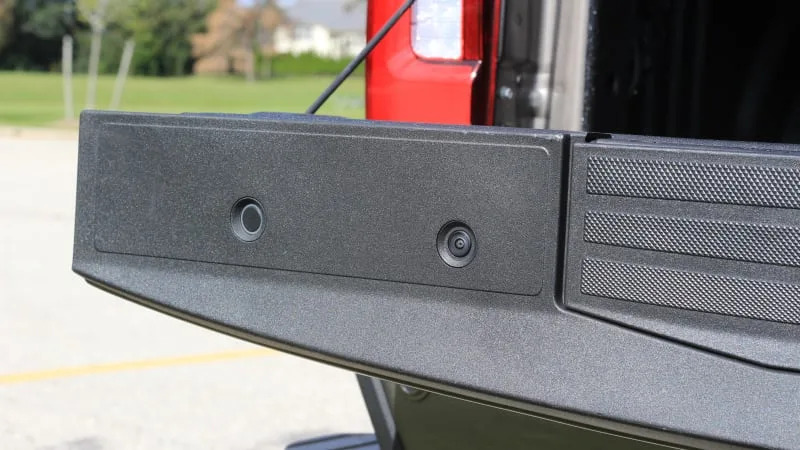
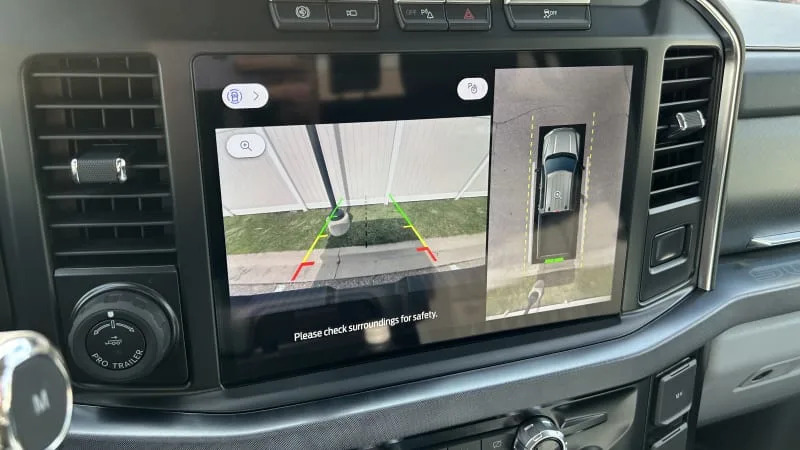

All the above said, we were a little disappointed to see a backup camera with fewer features (no gridlines) and worse quality than the standard backup camera (above left) when we tried it out. Plus, the camera itself (seen above right) is offset, which makes for some odd angles and distortions when you’re trying to be precise backing up. The sensors work just as they’re billed to, but overall, we didn’t see this pickup innovation as one that’s going to change how people use their trucks like past F-Series Tech of the Year winners.
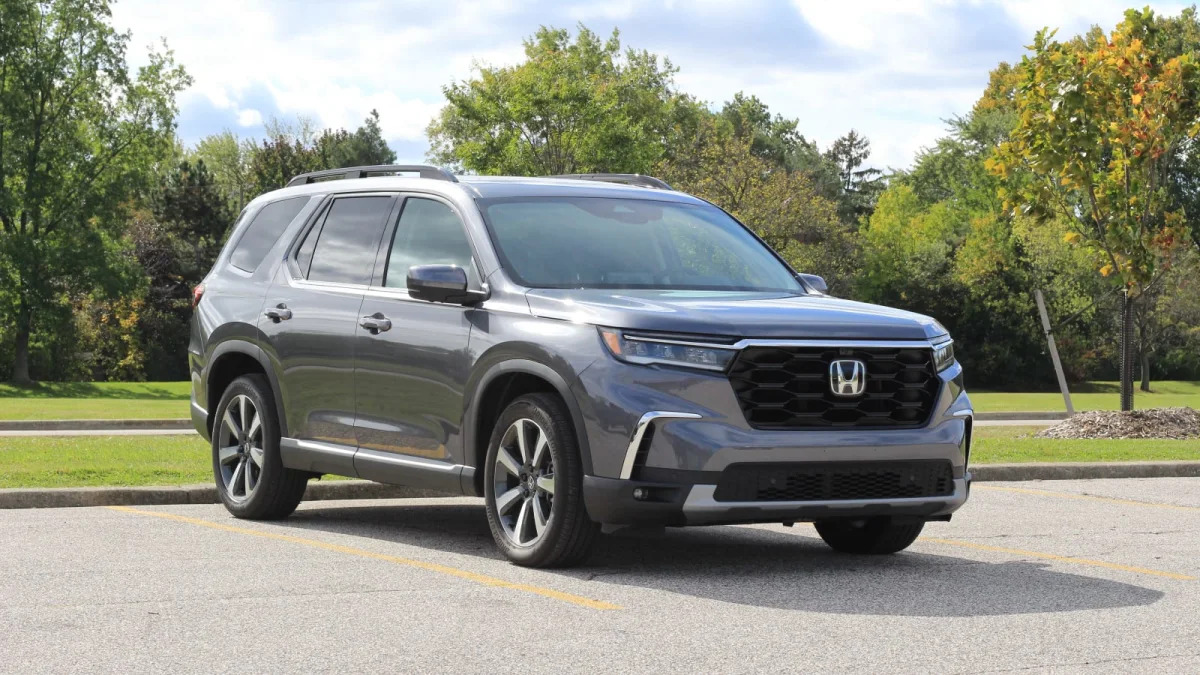
Fifth Place: Honda Pilot’s removable second-row middle seat
Honda made the list of Tech of the Year finalists with what is arguably the least tech-sounding feature on the list, but that removable seat is an innovation in utility nonetheless. Perhaps best suited to the individual who can’t decide if they want captain’s chairs or a full middle row when purchasing their new three-row SUV, the easily removable center seat ensures you won’t have to make a decision either way. Leave the seat in place, and you get maximum people capacity or a flat three-across seat – News Editor Joel Stocksdale was particularly glad to have that capability for his four-legged friend who likes to sprawl across the second row.
Alternatively, you can remove that second row and open up a passthrough for people to easily get into the third row or to create floor space for more cargo. And if you’re one who relishes the luxurious thought of captain’s chairs, removing that middle seat essentially leaves you with a pair of captain’s chairs in the second row. A key element here, though, is that Honda lets you store that seat in an underfloor compartment so that you can easily grab it and install it should the need arise.
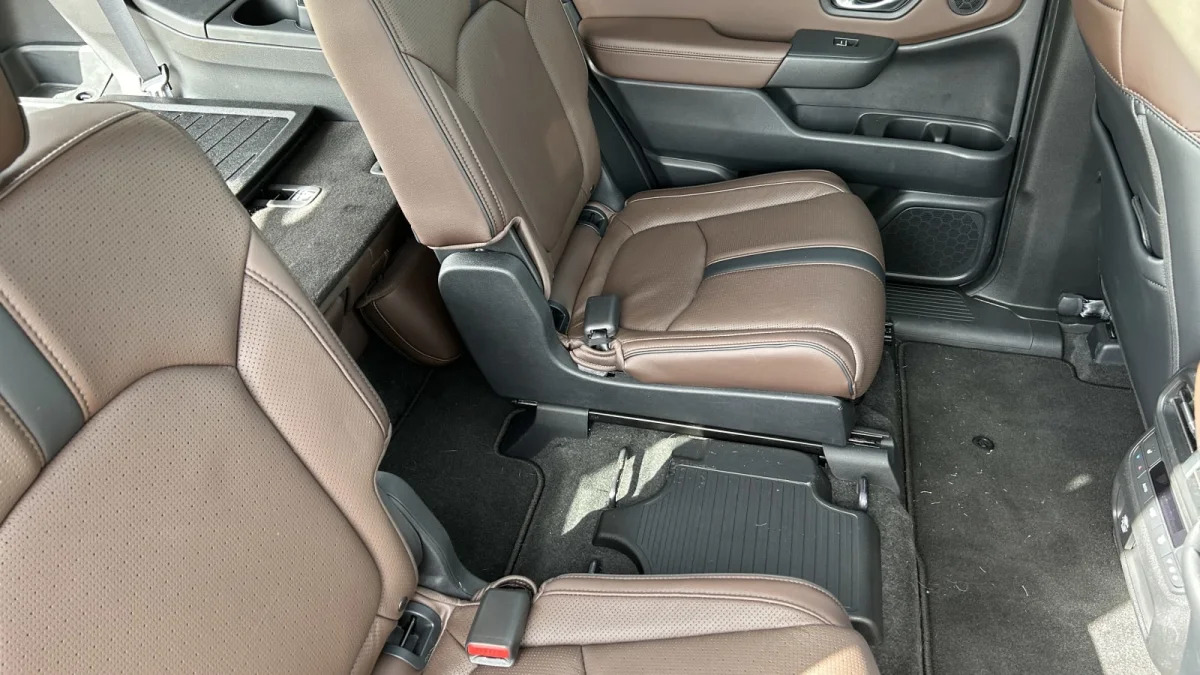
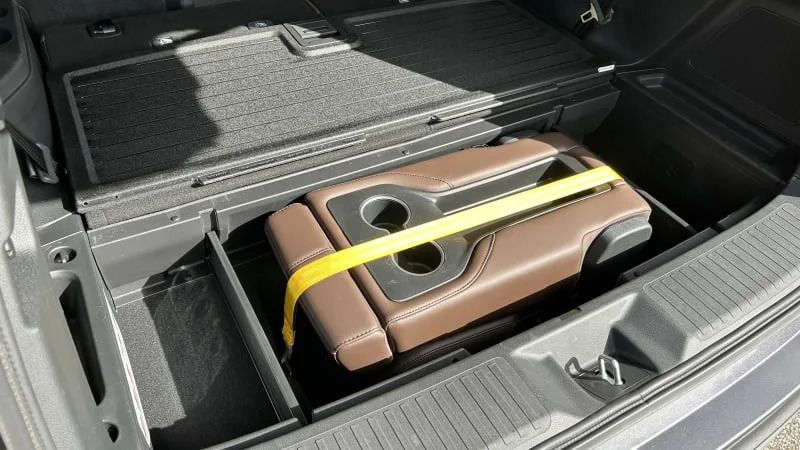
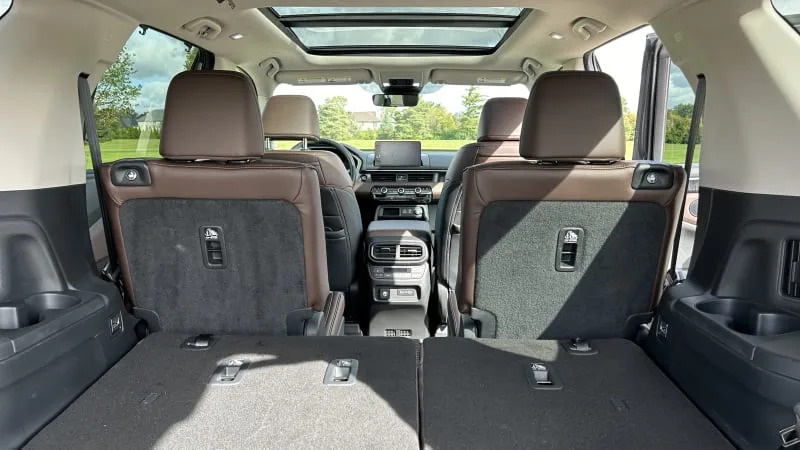
Our biggest beef with this removable seat is its weight and clunky storage process. The strap you’re meant to use to secure it is annoying at best, and we wish the seat itself were a little easier to get in and out of the vehicle. Honda’s installation process is simple, but the seat is unwieldy and could prove too heavy for many. Plus, getting in and out of the vehicle via sliding the second-row seat forward isn’t much different than clambering through the middle passthrough with the seat out. The idea is a good one, and a clear point of differentiation for the Pilot versus its many tough three-row SUVs rivals, but there were simply stronger tech competitors in this year’s Autoblog Technology of the Year competition.
“The Honda Pilot’s removable center seat is a welcome piece of seat removal and storage innovation, though it’s one that is questionably useful,” Stocksdale notes. “It’s definitely nice to have the flexibility of adding or removing an extra place in the vehicle, and to not have to leave the seat behind. And as previously mentioned, a bench seat is mighty handy for a larger dog like my own. But getting that middle seat past the outboard positions is a bit awkward, and the access or perceived comfort provided by the captain’s chairs arrangement is questionable at best. And having it in the back means that handy deep cargo well is filled with a seat. It’s certainly interesting, and maybe will be good in niche cases, but it may be too niche.”
*******
These five technologies all proved to be more interesting and multi-faceted than they might’ve looked on the surface, but it’s Mercedes’ Dolby Atmos audio system that ended up being the best and brightest of them all. We’re already compiling lists for the 2024 competition, and it’s looking like a strong field, but for now, go find yourself a new Mercedes-Benz product and try out the Spatial Audio – you’ll be glad you did.
